Why Spider Plant’s Leaves Turn Brown: 11 Reasons & Fixes
-
Pete Ortiz
- Last updated:

Strong, long-lasting, and able to thrive in rough conditions, the spider plant is quick to adapt to any environment. As far as the toughest houseplants go, this one’s definitely in the top 3. It takes very little effort to grow, looks great on the windowsill, and rarely falls victim to diseases or insects. There is one (minor) problem with the “ribbon plant”, though, when the leaves go brown.
Why does that happen, exactly? How dangerous is it? And more importantly, how can you fix that? The following guide includes the 11 most common causes of brown spots on the leaves, including overwatering, lack of sunlight, salty soil, small containers, and more. Ready to tackle this issue and make the ribbon plant’s tips green again? Then keep reading!
| Botanical Name: | Chlorophytum comosum |
| Soil Type: | Well-drained, rocky, loamy, moist, nutrient-rich |
| Soil PH: | 6.0–7.0 (slightly acidic) |
| Sun Exposure: | Indirect sunlight |
| Watering Requirements: | Low, once a week |
| Temperature: | 70–90° Fahrenheit |
| Humidity Levels: | 50–60% |
| Hardiness Zone: | 9–11 USDA |
| Blooming Time: | Early spring or summer |
The 11 Reasons Why Spider Plant’s Leaves Turn Brown
1. You’re Not Giving It Enough Water
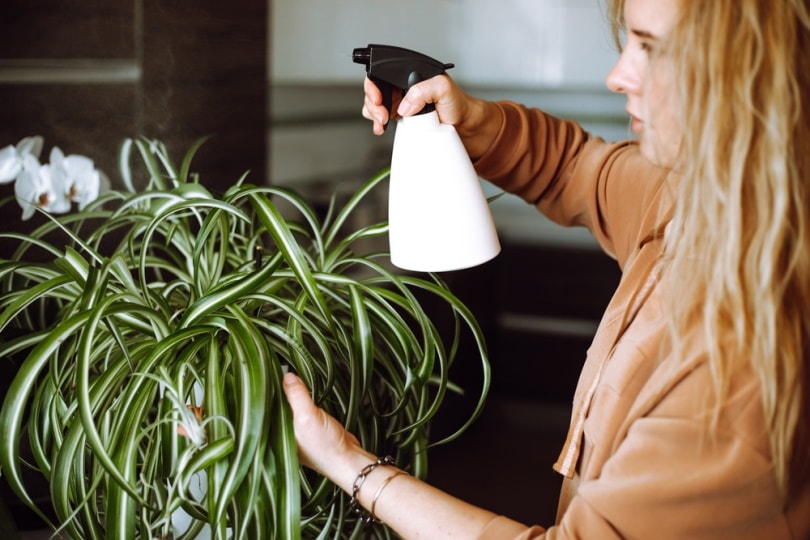
If you’ve been asking yourself—why are the tips of my spider plant turning brown—the first thing to check is your watering routine. Water is an essential element for spider ivy. Without it, the plant will turn brown and, eventually, die. Unless you’ve been using a scheduling app or writing everything down, you’ve probably been less than perfect with your watering chores. Well, now it’s time to fix that!
2. Overwatering + Harmful Chemicals
Overwatering is another common cause of brown leaves on the spider plant. When the soil is overly moisturized, it’s the root system that suffers the most. This could be going on for a couple of days, and you’ll only learn of the problem when the leaves start to wither and develop tiny brown marks. So, what should you do?
Let the soil dry completely in between the watering sessions. As with any other plant, check it with your fingers—no special equipment is needed. Dip them 2–3 inches into the soil to get an understanding of exactly how moist the roots are. And one more thing: if you live in the city, chances are, the water that you’re feeding to the plant is filled with fluoride, chlorine¹, and other chemicals.
Over time, they build up in the soil and start burning the leaves, turning them brown. If you’re constantly overwatering the plant, this will happen rather soon. To avoid that, create a strict watering schedule and only use distilled water. Rainwater will also do.
3. The Temperature Is Too High/Low
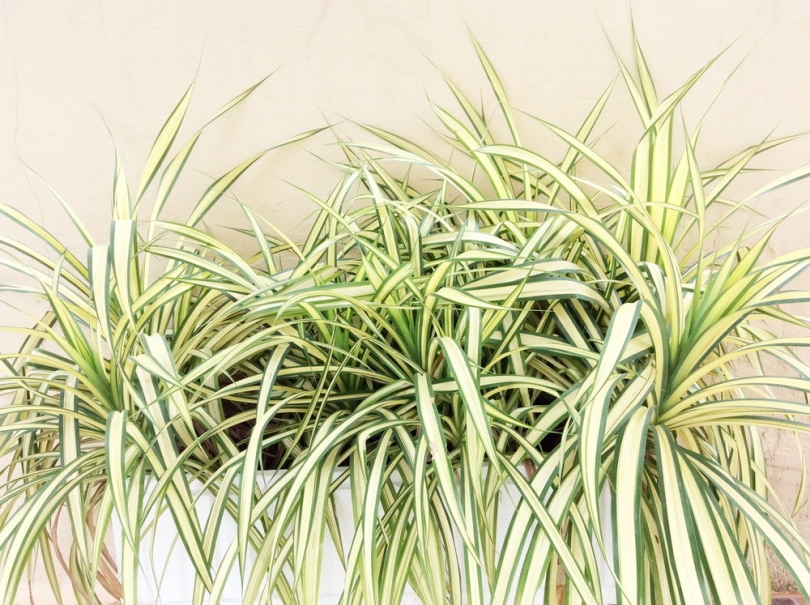
In contrast to most houseplants, the ribbon plant won’t thrive in a tropical climate. Instead, it prefers cool temps. The ideal temperature for it is 70–90 degrees F¹. Now, it can survive at 35 degrees. However, you won’t see much growth below 60–65 F. This plant is hardy to zones 9–11. Some varieties have an even narrower range: 10b–11a.
4. The Sun Is Burning the Tips
Another thing that sets this plant aside from the “competition” is the fact that it needs very little sunlight to grow. Direct sunlight is too much for it to handle. Continuous exposure will leave brown marks all over the leaves. We’re not saying it’s supposed to be kept in the shade all the time, either. Ideally, you should go for bright yet indirect light.
5. Not Enough Humidity in the Air
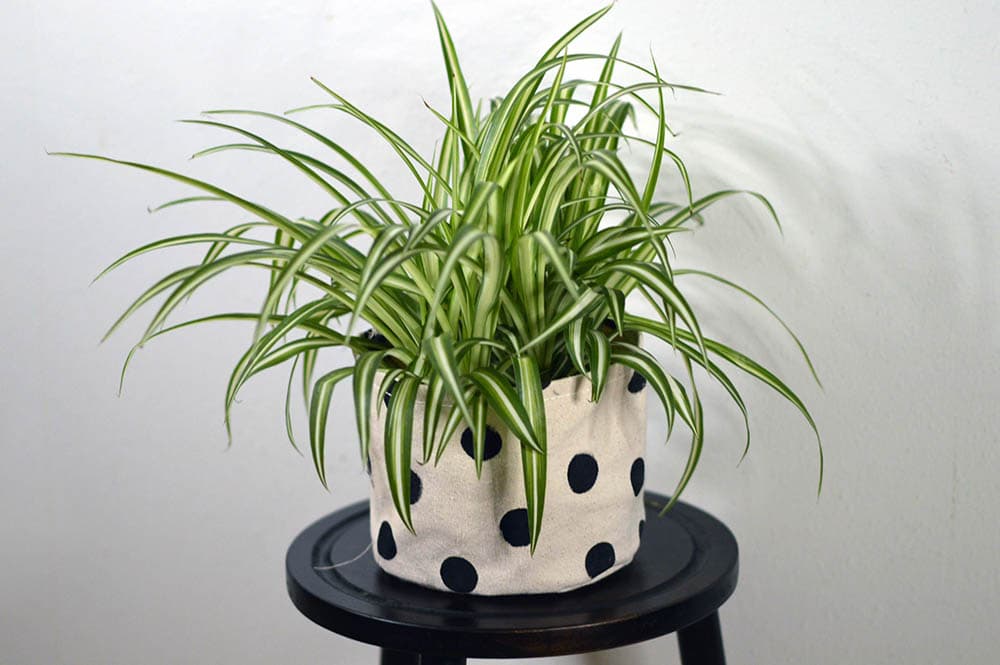
Yes, humidity plays an important role in the well-being of the ribbon plant. The right humidity range for it is 40–70%, just like for humans in most parts of the world. So, if you live in an extremely wet or dry area, you might want to water it less or more often. Also, try moving the pot to a different room, like one that doesn’t have a humidifier or dehumidifier on 24/7.
6. Salt Overdose in the Soil
The ideal soil for the spider plant is well-drained, loose, and loamy, with neutral acidity. It’s safe to say that it can grow in almost any type of soil as long as it has decent drainage. Alkaline soil is not preferred, but low levels of it won’t hurt the plant. In contrast, if the soil is too salty¹, that will instantly make the leaves turn brown.
7. Too Much Fertilizer
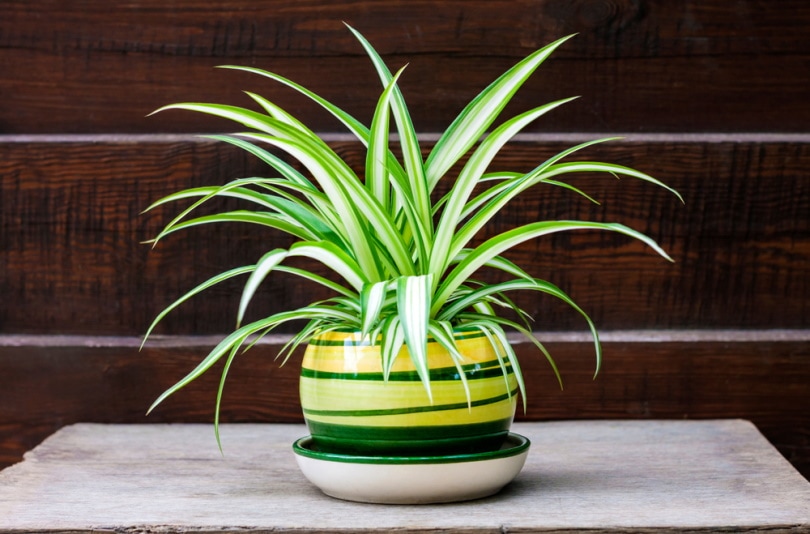
This plant gets by with much fewer nutrients than the average houseplant. Still, it will greatly benefit from adequate fertilization. We’re talking about once a month in spring/summer and once in 2–3 months in winter. A ratio of 3–1–2 has proven to be a great place to start. Do avoid mixes that are rich in fluoride or boron, though.
When there’s too much of that in the soil, toxicity follows. The roots will take the biggest “hit”, but, eventually, you’ll see the leaves (or, rather, the tips) turn brown. How do you fix this, then?
8. The Container Is Too Small
It’s very common for plants to overgrow their pots. When that happens, it becomes much harder for the roots to grow and be efficient at providing nutrients for the plant. If it’s a plastic pot, the roots might even break it. Another big issue has to do with overwatering: when the container is small, the drainage holes will, most likely, get clogged. As a result, excess water won’t be able to escape through those holes in time.
That’s how the root rot disease develops, which, in turn, can make the leaves go brown.
9. Infection Has Taken Over

The spider plant is highly resistant to insects, pests, and diseases. However, it’s not immune. So, if you’re doing everything right with the soil, temperature, watering, and the container is big enough, but the leaves are hurting, an infection might be to blame here. Sometimes, it causes the leaves to fade; or, it can make them turn brown.
10. Bad Pruning/Physical Damage
What do you do with all the tiny offsets growing from the spider plant? We recommend trimming at least some of the pups and planting them in new containers. In a couple of months, they’ll grow into full-fledged plants! Now, pruning doesn’t require a master’s degree. You do need to be careful, though, especially if you use a pair of sharp scissors.
One wrong move can end up hurting the leaves or the stems. Or, maybe you’ve accidentally hit or dropped the plant to the ground? You’ll be surprised by how often that happens. Physical damage makes the plant fade, wither, slows down growth, and more.
11. It Has to Do With Age
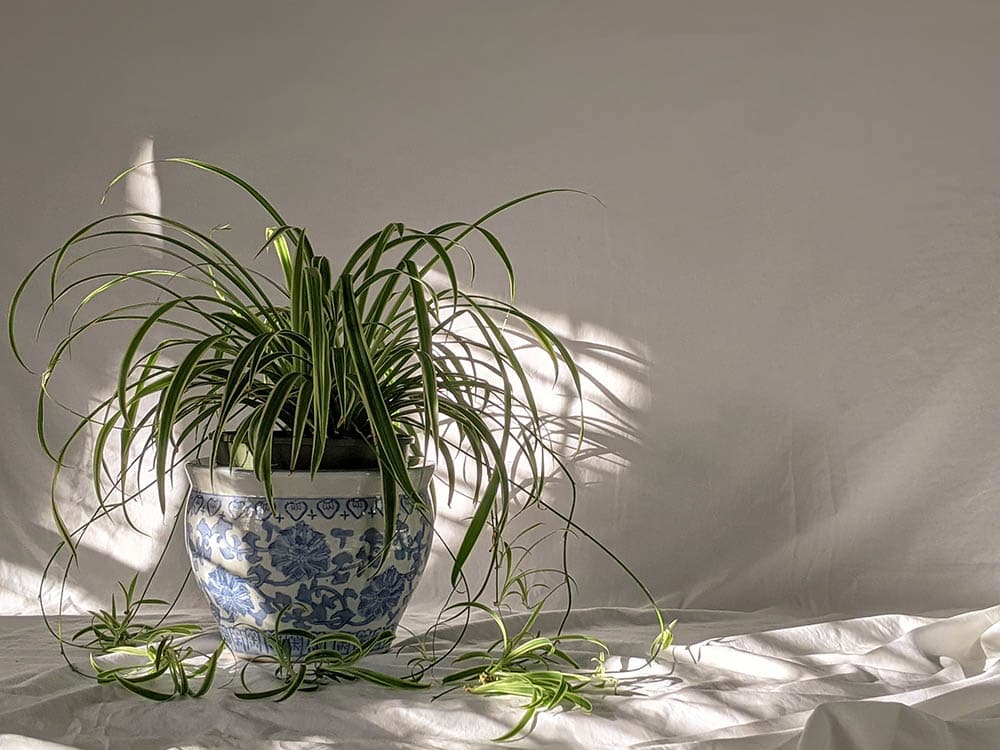
Just like any other form of organic life on the planet, the spider plant grows old. Over time, you’ll start noticing discolored or brown spots on the leaves. This is actually a normal thing for most houseplants and happens no matter how well you take care of them. No amount of fertilizer, sun exposure, or pruning will be able to fix that.
Spider Plant: Key Characteristics
It takes one look at this plant to know why it has such a “creepy” name. When the plant is fully grown, dozens of so-called “spiderettes” or “pups” emerge from it, crawling down to the floor like tiny spiders. From afar, it might seem like this is a delicate plant. However, it’s incredibly resilient and doesn’t need much care to flourish. That’s what makes it a go-to choice for many home gardeners across the country.
Did you know that the spider plant is praised by NASA¹ for its air-purifying ability? That’s right: if you cover the entire windowsill with it, you’ll probably feel the difference in the air quality. And, it has an exotic, exquisite vibe with those long, thin, and bright-green leaves. Quick to adapt, long-lasting (it lives up to 20–50 years¹), and fast to grow, spider ivy can go on for weeks, if not months on its own.
What’s the Best Species for Growing Indoors?
There are 200+ different types of spider plants out there and they all come in various shapes and sizes. We can break them down into three major categories: variegated, curly, and solid. The most popular species is the variegated spider plant, also known as Vittatum. The leaves aren’t particularly thick or long, but they are very bright, which is partially why so many people choose this species as their houseplant.
The “Bonnie” variety has slightly longer leaves with more twists. In many ways, it’s the same plant. But wait—which spider plant should you pick for a hanging basket? The “Zebra” plant will be perfect for that. It grows really fast and produces pups sooner than most species. In contrast, gardeners that want their spider ivy to be thick and extra green buy seeds of the so-called “Airplane” plant. The list goes on and on.
- Hawaiian spider plant
- Ocean spider plant
- Reverse spider plant
- The bracket plant
- The fire flash
In Conclusion
The spider ivy is one of the best houseplants out there. It’s beautiful, looks great in a hanging planter/pot, and does very well on its own. This plant can grow in tiny containers, in poor soil, and in partial shade. However, if you’re noticing the leaves turn brown, that means you’re doing something wrong. Yes, there’s a reason behind this, and the sooner you root out the problem, the better.
Now, while that could take some trial and error, it shouldn’t be very hard to figure out what’s making brown spots “pop up” on the tips. Earlier, we discussed the most common causes and quick and effective ways to fix them. So, go back to the list, find the solution that works for your plant, and take action!
- UFL.Edu – Spider Plant Production Guide
- Wikipedia – Foot-candle light intensity
- Wikipedia – Chlorophytum comosum
- Air Plant Misting: How Do I Water An Air Plan
- How to Grow and Care for Spider Plants
- How Long Do Spider Plants Live?
- The Spruce – How to Grow and Care for Spider Plant
- Interior Landscape Plants for Indoor Air Pollution Abatement
- PlantTalkColorado – What are spider plants?
- Types of Spider Plants – 7 Different Varieties
- 10 Popular Types of Spider Plant & How to Grow Them
- Brown Tips on Spider Plants: Causes and Cures
- How to Revive a Dying Spider Plant
Featured Image Credit: Yulia YasPe, Shutterstock
Contents


